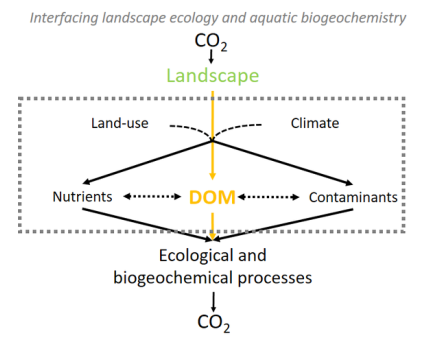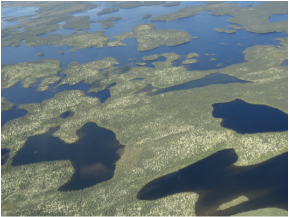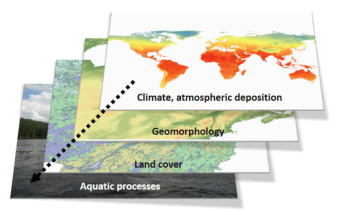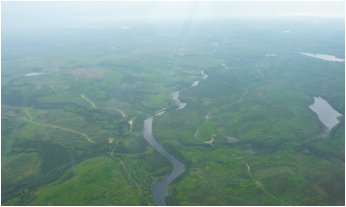Aquatic ecosystems are biogeochemical hotspots in a complex landscape that undergoes rapid natural and human-driven changes in land-use, land-cover, hydrology, and climate. The pathways by which these changes affect aquatic ecosystem functioning, however, remain poorly understood due to the scale disconnect that limits knowledge transfer between local, process-based studies and broad-scale, pattern-based studies in aquatic biogeochemistry. My research is at the interface of aquatic biogeochemistry and landscape ecology and focuses on the coupling between ecological and biogeochemical processes along common environmental gradients that dictate the temporal and spatial patterns in aquatic dissolved organic matter (DOM), an integrative variable with direct and indirect influence on virtually every process occurring in the water column of lakes and rivers. The overarching goal of my research program is to disentangle the pathways through which rapid changes in climate and land-use at the landscape-level drive the fate of terrestrial carbon, nutrients and contaminants in continental watersheds. To do so, my lab is interested in the following main themes:
3. Coupled dynamics of carbon, nutrients and contaminants along environmental gradients.How do human-related pressures (land-use, hydro-electric development, climate change) affect the timing and location of the differential loadings and losses of carbon, nutrients and contaminants at the landscape level?
|
4. C-N-P dynamics along the St. Lawrence riverscapeHow do the biological, chemical and physical environments of the St. Lawrence evolve as it receives the waters of rivers with pristine, agricultural and urban catchments? Are there geographic hotspots with the capacity to retain the C-N-P, and contaminants originating from human activities?
|




